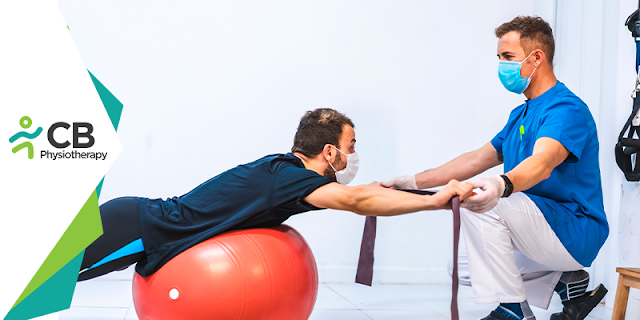Returning to Sports after Back Pain: What role does Physiotherapy play?
Do you suffer from back pain while bending over and standing up? And want to get back to running? Then doing the right kind of exercises without straining your back, can help you relieve your back pain. The exercises can be done under the guidance of a well-trained physiotherapist who recommends a tailored exercise program depending on the intensity of your pain and its causes. In this blog, we will discuss the steps that should be taken, to safely return to running when you have back pain.
1: Understanding the cause
Understanding the cause is the key to recovery. Your physiotherapist tries to know the cause behind your back pain and does a physical examination to find out the structures that are involved so that it is easy for him/her to plan out the exercises that should be done. A skilled physiotherapist will be able to assess and provide you with a diagnosis and treatment plan.
2: Treatment plan
Plenty of different structures like muscles, ligaments, tendons, joints, discs, and nerves can injure your back by different types of injuries like overuse, compression, repetitive movement, etc. The treatment plan includes pain relief, range of motion (PROM and AROM), and strengthening exercises.
· Range of motion exercises
Treatment is started with pain relief modalities like TENS, Ultrasound, Laser, Shockwave, etc followed by passive range of motion and active range of motion exercises done in pain-free ranges to maintain the joint movement. Once these are achieved the therapist starts stretching exercises are started.
· Strengthening exercises:
Strengthening exercises help to improve circulation and increase the strength of the muscles to support your spine. These exercises are set at the correct level for the specific type of injuries so that these exercises do not cause any pain during or after the treatment session. There is an endless list of exercises that can be done, but your physiotherapist chooses the appropriate exercises to strengthen your back.
· Moving:
Movement is encouraged for the back pain sufferers to remain active. For the patient with acute pain, short walks can be recommended. But other options like a long walk, swimming or cycling. While doing these exercises the patient might feel mild discomfort which is normal.
3: Time
The healing process takes time as new healthy cells are produced to replace the damaged ones. Strength and flexibility also take several weeks to increase. An average time taken for healing can be :
- Mild sprain – 5 to 6 weeks
- Severe sprain – 8 weeks or several months
- Mild disc injury – 10 to 12 weeks
- Severe disc injury – This can vary a lot but almost from 6 months to 2 years to get back to full function.
- An injury affecting one of the nerves in the leg – This can vary a lot depending on the type of injury but can take almost from 3 months to 2 years.
4: Walk/Run program
Walking or running is a part of the treatment program. Walking and running allow the lower back to slowly get used to the impact forces. Short-run intervals are quite short, which might cause mild discomfort that settles quickly. Whereas long continuous running can cause an intense flare-up that may take several days to settle down.
The level of pain does not indicate the severity of the injury. It is often found, once a person starts doing the right things, severe pain settles down to very mild levels. We can usually predict much more effectively how long an injury will take to recover by observing how a person's pain changes within the first 2 weeks of following the treatment advice.


